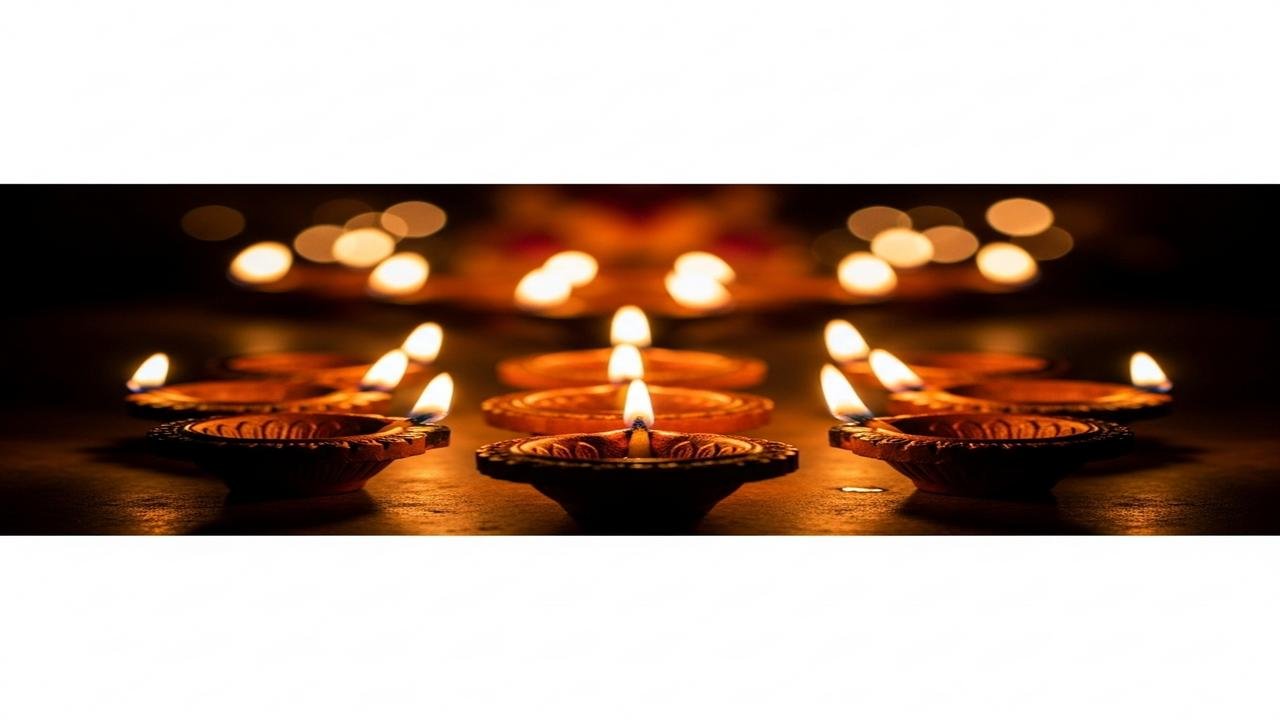Nine Diyas in Navratri: Why They Symbolize Navadurga

Why nine diyas during Navratri?
Lighting lamps — pradīpa — is a central act in many Hindu rituals: it symbolises knowledge over ignorance, presence over absence, and the sacred fire that connects the household to the divine. During Navaratri — literally “nine nights” — many households and temples display nine lamps or light nine wicks. That practice collects several strands of meaning from scripture, ritual manuals, astrology, and lived regional tradition. Below I unpack the main lines of interpretation and how they coexist in practice.
Textual and ritual background
The core festival literature for Durga worship includes the Devi Mahatmya (the episode in the Markandeya Purana), which narrates the Goddess’s battles and is widely recited during Navaratri. While that text celebrates the Goddess’s victories, it does not rigidly prescribe the exact number of lamps to be lit. Specific numbers and arrangements of lamps are more often found in Agama and local ritual handbooks and in living temple practice.
Put simply: the idea of illuminating the altar is ancient and pan‑Hindu; the specifically “nine” formula is a later, syncretic layering that draws on festival structure, numerology and regional ritual norms.
Layers of symbolism behind the number nine
- Navadurga — the nine forms of the Goddess: Navaratri is commonly devoted to the nine manifestations of the Devi (called Navadurga), each night honouring a different form. Lighting nine lamps can be a simple, visible way to represent all nine goddesses together on the altar.
- Cosmology and wholeness: In Indian symbolic systems, nine often signifies completeness — three times three, or the three worlds (heaven, earth, atmosphere) multiplied by the three gunas (qualities). The number evokes wholeness rather than an arbitrary count.
- Navagraha — nine planetary forces: Some households link the nine lamps to the navagraha (nine planets) and light lamps as a devotional and remedial gesture toward cosmic order. This association is stronger in astrologically oriented ritual contexts than in strictly Shakta liturgy.
- Chakras and inner progress: In certain tantric and yoga-inspired interpretations, nine can be mapped to subtle centres and spiritual stages — a symbolic reminder that the festival is about inner transformation as well as outer celebration.
How ritual manuals and local practice shape the custom
Agama texts and regional puja manuals offer specific prescriptions for the number, placement, and type of lamps in temple practice. In many South Indian temples you will find rows of multiple oil lamps (often lit in odd numbers), while in some domestic forms a single lamp with nine wicks or nine separate small diyas is preferred.
Regional variation is wide:
- In Gujarat and much of North India, Navaratri is danced, celebrated and daily pujas are performed; families may light lamps corresponding to each night’s goddess.
- In Bengal, where Durga Puja culminates at a slightly different time, lamps and clay diyas are an essential part of the evening ritual but the focus is often the idol and its rites rather than the fixed “nine-diyas” formula.
- In South India, temple practice and home altars often use multiple oil lamps — the number may be nine, eleven, or more, depending on local custom and the specific ritual being performed.
Practical ways people use nine lamps
The practice appears in a few common domestic formats:
- Nine separate small diyas arranged before the image of the Goddess, one lit on each evening or all lit together each night.
- A single lamp with nine wicks (a stacked or multiple-wick lamp), sometimes called a navadīpa, which symbolically unites the nine lights in one vessel.
- Lighting one lamp per night and adding one more each night until nine are burning on the final night — a way to mark the festival’s progression.
Interpretive diversity — and overlap
Different communities and schools (Śaiva, Vaiṣṇava, Śākta, Smārta) bring their own emphases. Śākta worship stresses the person and power of the Goddess and therefore foregrounds the Navadurga reading. Vaiṣṇava families who observe Navaratri as part of a larger seasonal worship may emphasise devotional songs and iconography, while Smārta households might follow scriptural or family manuals that set out a prescribed number of lamps. Many practitioners simply adopt what their family taught them: ritual continuity often matters more than doctrinal exactness.
Contemporary meanings and lived practice
For many modern households the nine diyas are both symbolic and aesthetic: they light up the evening, mark the ritual rhythm of the nine nights, and create a shared space for chanting, readings and family gatherings. For others the lamps have protective or auspicious connotations linked with local belief about warding off evil or invoking blessings for prosperity. Scholars of religion note that such practices often accumulate multiple meanings over time — devotional, social, and cosmological — without any contradiction.
Practical notes and cautions
- When using oil lamps indoors, follow basic fire safety: place lamps on a stable, non‑flammable surface and never leave them unattended.
- If you are fasting or undertaking breathwork or other intense practices during Navaratri, consult a qualified practitioner for safety and health guidance.
In short, lighting nine diyas during Navaratri is a layered practice: part scriptural memory, part ritual prescription, and part lived tradition. Whether understood as an honouring of the Navadurga, a recognition of cosmic order, or simply a way to sanctify evening time with light, the nine lamps connect households and temples across regions to the core Navaratri theme — bringing light into the dark, and the sacred into the everyday.
